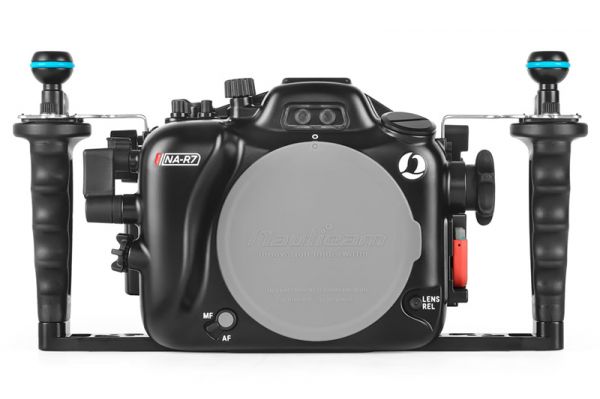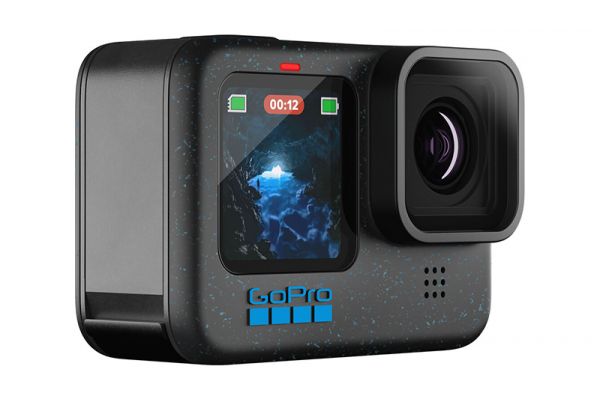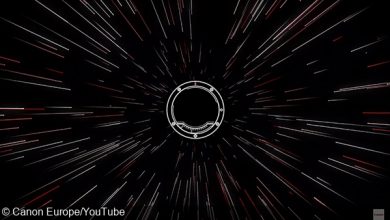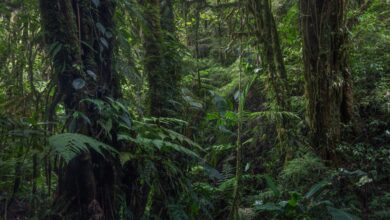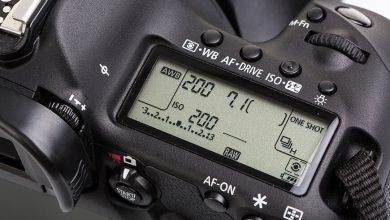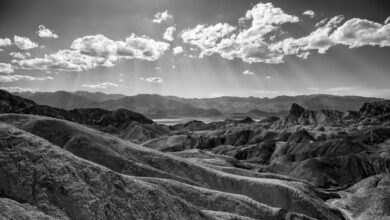Underwater Photo/Video Buyer’s Guide – Spring 2024
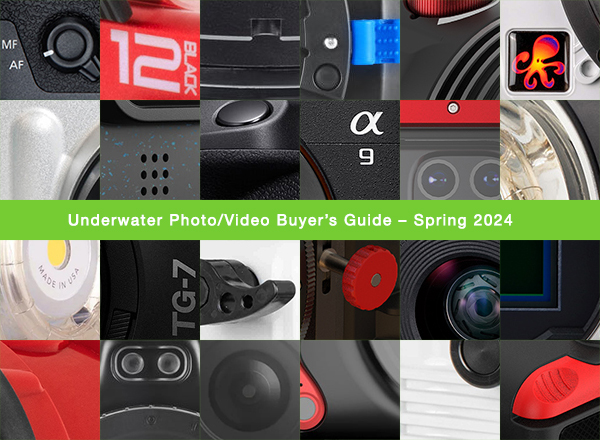

Spring is here! The season of growth and renewal is upon us—at least if you live in the Northern Hemisphere—so it’s surely time you grew and renewed your underwater imaging gear! Yes, friends, the time has come for another awesome edition of our seasonal Underwater Photo/Video Buyer’s Guide!
Sure, you can always rifle through DPG’s comprehensive Underwater Photo/Video Equipment Guide anytime you please, but if you want to know what’s hottest right now in the world of underwater imaging, we’ve collected it all right here in one manageably juicy article. Whether it’s just plain old red hot or just so brand spankingly new that it hasn’t yet made it to our permanent equipment guide, we’ve got the recommendations to set your imagination alight!
1. Interchangeable-Lens Cameras
Sony a9 III
Sony has been churning out iteratively improved full-frame cameras for a long while now, and you could argue that there isn’t anything to get all that excited about. Well, inarguably, all that changed with the a9 III, which—if you weren’t already aware—is the first full-frame camera with a global shutter, i.e., all the sensor’s pixels are captured simultaneously. The implications for underwater imaging are huge: first, flash sync at any shutter speed (up to 1/80,000s!), allowing you much greater control of ambient light while making use of the full output of your strobes; and second, zero rolling shutter, for uber-smooth video. In short, a game-changer. $6,000 | www.sony.com | www.backscatter.com
Who Should Buy It?
Game-changing tech comes at a price, a rather steep price that puts the a9 III out of reach for a lot of people. If you’re not one of those people, then go ahead and start taking pictures that no-one else can. Otherwise, Sony has plenty of other impressive cameras for considerably less money—for example, the a7R V or a7 IV. But, of course, they just have a regular shutter…
Housing Options
- Ikelite: After dropping $6K on the camera, you might want to save some serious money on your housing, and Ikelite’s offering allows you to do that without compromising on features or functionality. Easily switch between manual and TTL operation on the fly by adding Ikelite’s TTL Converter and Hotshoe Kit. And make use of the housing’s M16 port by installing Ikelite’s USB Charging and Data Transfer Bulkhead (see Accessories)—so you never have to take the camera out of the housing. $1,995 | www.ikelite.com | www.backscatter.com
- Nauticam: The NA-A9III promises all the good stuff the Hong Kong-headquartered company is known for: durable aluminum construction, ergonomic control layout, and compatibility with Nauticam’s highly-regarded water-contact optics, such as the WACP and FCP. There are built-in fiber-optic ports for strobes, but there’s also an M14 port that could be used for an electrical bulkhead if preferred. If you want to hook up a monitor/recorder such as the Atomos Ninja V, there’s also a large-bore M24 accessory port for that chunky HDMI 2.0 cable. $4,657 | www.nauticam.com | www.backscatter.com
Nikon Z8
When Nikon introduced the flagship Z9 with its 45.7MP stacked CMOS sensor, 8K/60p RAW video capture, and ability to shoot 20fps RAW bursts for 1,000-plus frames, shooters everywhere salivated—and then collapsed in agony at the prospect of having to shell out $5,500 for the beast. But just when all seemed hopeless, Nikon did a remarkable thing: It put the same camera in a much smaller box and swiped $1,500 off the price. In the process, Nikon created what many shooters consider to be the ultimate all-round tool for underwater imaging. $3,800 | www.nikonusa.com | www.backscatter.com
Who Should Buy It?
After reviewing the Z9 and the Z8, DPG Field Editor Nicolas Remy couldn’t find much to separate the two cameras beyond battery life (the Z9 lasts “around 2.5 times longer”) and autofocus tracking (the Z9 scored “a touch higher”). Taking the price into consideration, Nicolas put it this way: “Most underwater photographers will find the Nikon Z8 to be in the sweet spot.”
Housing Options
- Seacam: With its fully electronic shutter, the Z8 might just need a housing that lasts a very, very long time, making Seacam’s beautiful silver housing the perfect choice for the discerning pro. Milled from a saltwater-proof light metal alloy that is twice hardened and anodized, the housing uses premium-quality materials throughout, including stainless steel and anodized aluminum buttons and dials. The housing can be configured with S6 or N5 bulkheads for reliable electrical strobe triggering, and there’s the option of connecting a monitor/recorder via HDMI. $5,710 | www.seacam.com | www.backscatter.com
- Ikelite: This 200DL housing offers all the usual Ikelite benefits, including a clear view of the camera through the transparent back, ergonomic levers for the shutter and back-button focus, and out-of-the-box electrical triggering of strobes in manual mode, with the option of adding a TTL converter for on-the-fly switching between manual and TTL. With this housing, you also have the option of fitting Ikelite’s USB-C Charging and Data Transfer Bulkhead (see Accessories), meaning you don’t ever have to remove the camera from the housing. $1,895 | www.ikelite.com | www.backscatter.com
Canon EOS R7
With all the emphasis on full-frame sensors in recent years, you may have missed the arrival of the cropped-sensor mirrorless camera. In Canon’s case, there are four APS-C bodies—the R7, R10, R50 and R100—with the R7 being the top of the range and the most impressively spec’d. The R7 boasts a 32.5MP sensor, the DIGIC X processor from the pro-level R3, image stabilization of up to seven stops, twin UHS-II SD card slots, and the higher-capacity battery found in the R5 and R6/R6 II. Reviewing the R7, DPG Photo Editor Matt Sullivan was blown away the stellar image quality and incredible autofocus tracking capabilities. $1,500 | www.canon.com | www.backscatter.com
Who Should Buy It?
In his review, Matt Sullivan deemed the R7 “a logical upgrade for shooters coming from the 7D series of DSLRs or anybody moving up from point-and-shoot or even Micro Four Thirds.” Plus, there’s a nice bonus with APS-C: You can dust off your favorite lens—the Tokina 10–17mm fisheye lens—and enjoy the big stuff like you did in the good old days.
Housing Options
- Ikelite: If you seek an affordable way to dive with the R7, Ikelite’s housing is the way to go. Leveraging the U.S. company’s Dry Lock Micro (DLM) port system, the housing features an ABS-PC body with handy transparent back, large control levers for shutter release and back-button focus, and manual electrical triggering of strobes out of the box. Want industry-leading automatic strobe exposure and the ability to switch between manual and TTL during your dives? Just add Ikelite’s TTL converter and a couple of DS-series strobes. $1,195 | www.ikelite.com | www.backscatter.com
- Nauticam: If you have a burning desire for aluminum, prefer triggering your strobes via fiber-optics, and don’t mind a rather serious dent in your wallet, there’s the NA-R7 housing. For your three-and-a-bit grand, you can have every control perfectly positioned underwater your fingertips, compatibility with Nauticam’s top-quality water-contact optics and wet lenses (like the FCP, WACPs, and CMCs), and a vacuum check and leak detection system as standard. $3,163 | www.nauticam.com | www.backscatter.com
Canon EOS R100
For Canon users, at the other end of the APS-C spectrum is the R100—for all intents and purposes a Rebel DSLR with an RF mount. Despite its tiny size and tiny price tag, the R100 packs in some decent specs: 24.2-megapixel CMOS sensor with Dual Pixel AF, 3.5fps burst shooting with AF (6.5fps without), and uncropped 1080/60p video. At the same time, the R100 offers an impressive level of customizability for a camera at this price point, including the ability to move autofocus to a custom button and enjoy back-button focus. In short, the R100 is a lot of camera for very little money. $380 | www.canon.com | www.backscatter.com
Who Should Buy It?
For photographers on a budget coming from a compact camera, GoPro, or even Micro Four Thirds that care most about image quality, the R100 is a no-brainer. The sensor is good enough to benefit from great lenses—and the camera’s incredible value means you’ll have more left over for good glass.
Housing Options
- Ikelite: The U.S. company offers the R100 in five different configurations, starting from the housing only without lens port ($795). For $250 more, you can have the housing in a kit with a six-inch dome port and zoom gear for the 18–45mm kit lens ($1,050). For $500 more, you can have the housing, dome port, zoom gear for the 18–45mm, tray with dual handles, vacuum pump, and a set of spare O-rings. Ikelite even offers these two options bundled with the camera and the 18–45mm lens ($1,650 and $1,895, respectively), so you can get a complete rig at one shot. The quickest and easiest way to start shooting high-quality images! $1,295 (Housing, dome port, zoom gear, tray with dual handles, vacuum pump, spare O-rings) | www.ikelite.com | www.backscatter.com
2. Fixed-Lens Cameras
SeaLife SportDiver Ultra for Smartphones
If you’re struggling to remember the last time someone launched a new compact camera, that’s because it’s been a long while now—excepting OM System’s TG-7 (below) masquerading as an Olympus TG-6. Smartphones, it seems, have all but killed off the compact camera category (hence the section title “Fixed-Lens Cameras”). The good news is that companies like SeaLife have jumped on the opportunity and created a housing that allows you to go diving with your smartphone. The new SportDiver Ultra uses Bluetooth Low Energy to communicate wirelessly with your Apple or Android device, while the polycarbonate housing gives you a nice, big shutter release as well as the ability to easily navigate the accompanying app’s functions using four buttons on the rear. The best part? The SportDiver Ultra is your way in to the ingenious Flex-Connect ecosystem of trays, grips and flex arms, as well as SeaLife’s extensive range of photo/video lights—not to mention some essential add-ons (see Accessories). $350 | www.sealife-cameras.com
Canon EOS R50 with RF-S 18–45mm
In the absence of any exciting compact camera releases, we have to get creative about what we put in this “Fixed-Lens Camera” category. Enter the Canon EOS R50 with RF-S 18–45mm kit lens attached. A small step up from the R100, the similar-size, similar-weight R50 improves on its cheaper sibling in a few areas: First, autofocus is Dual Pixel II (as opposed to the R100’s first-gen system) and continuous shooting is 12fps (versus the 3.5fps of the R100). Second, 4K video capture is 10 bit at up to 30p with no crop, while the R100 produces heavily cropped 4K video. So, why are we talking about an interchangeable-lens camera in a fixed-lens camera section? Scroll down to find out… $800 (Canon EOS R50 with RF-S 18–45mm) | www.canon.com | www.backscatter.com
- Nauticam: With their NA-R50 housing, Nauticam made a bold move: They created a housing for the R50 with the RF-S 18–45mm kit lens attached. Much like a fixed-lens compact camera system, the housing has an integrated flat port with a bayonet mount that allows the attachment of Nauticam’s various high-quality wet lenses and water-contact optics, such as the CMC-1 or CMC-2 for macro and the WWL-1B or WWL-C for wide angle. Two configurations are offered: the housing by itself, or the “Pro Package” (pictured) including housing, tray, handles, and M16 vacuum valve. $1,494 (Housing only) | www.nauticam.com | www.backscatter.com | $2,030 (Pro Package) | www.nauticam.com | www.backscatter.com
OM System Tough TG-7
If one compact camera line deserves to have survived the smartphone’s inexorable rise to ubiquity, it’s the Tough TG series, started by Olympus in 2012 and continued by OM Digital Solutions all the way till today. From the beginning, this diminutive rugged camera has been built around the same tiny lens, a fast 25–100mm f/2.0–4.9 (equivalent) zoom, and with each new version, the sensor and processing technology has progressively improved. The latest incarnation, the OM System TG-7, is barely distinguishable from the Olympus TG-6, but that hardly matters: This remains an awesome little compact camera that’s perfect for underwater shooters starting their photographic journey. $500 | www.omsystem.com | www.backscatter.com
Who Should Buy It?
This is one of the last compacts standing—and deservedly so. From capturing the tiniest critters (by using the mind-blowing Microscope Mode) to shooting the biggest animals and reefscapes (by adding a suitable wide-angle wet lens), there’s almost nothing the TG-7 can’t handle, making this a very satisfying camera for beginners.
Housing Options
- Ikelite: Olympus didn’t just develop an innovative little rugged camera; it also created an amazing little fisheye attachment (FCON-T02) that happens to be perfect for underwater imaging. And one of the two housing configurations Ikelite offers is specifically designed for this combo: their TG-7/TG-6 housing combined with a six-inch dome port specially designed for the fisheye lens. With full zoom-through (at the touch of a button), this setup allows you to shoot macro, wide angle, and even over-unders on the same dive! If you’d prefer a housing you can pair with your favorite wet lenses, go for Ikelite’s second configuration with a 67mm threaded flat port. $550 (Housing with dome port) | www.ikelite.com | www.backscatter.com | $350 (Housing with flat port) | www.ikelite.com | www.backscatter.com
- Kraken Sports: Another way to give your TG-7 superpowers is to slide it into Kraken’s TG-Pro aluminum housing, which has a couple of clever tricks up its sleeves. The first is a built-in electric vacuum pump (which is engaged with a single click) and an integrated vacuum detection circuit with an indicator light. The second is a compartment for a single 18650 lithium-ion rechargeable battery, which powers the camera (as well as vacuum pump and circuit) for at least six hours. Screw your favorite wet lens on the 52mm threaded lens port, add strobes via fiber-optic cables, or even attach a monitor via the M16 port on the top. $880 | www.krakensports.ca | www.backscatter.com
GoPro HERO12 Black
The HERO11 was a giant leap up from the HERO10: There was a sizable resolution increase from 23MP to 27MP, video up to 5.3K/60p and 4K/120p could be captured in 10-bit color (as opposed to the 8 bits of earlier models), and a new 16:9 super-wide view was introduced. By comparison, the upgrade to the HERO12 is more of a modest hop, but there are still two big things to get excited about: (i) power management and processing efficiency improvements give the new model twice the runtime of its predecessor (despite using the same battery), and (ii) there’s now GP-Log encoding, allowing greater control of tonal adjustments and color grading in post. $450 | www.gopro.com | www.backscatter.com
Who Should Buy It?
A mere 500 bucks will get you a HERO12 in a waterproof case, so why shouldn’t you buy one? Whether it’s for high-quality B-roll footage or as a serious videography tool, the GoPro is a pretty extraordinary little box that every aspiring or established filmmaker should own.
Housing Options
- AOI: Truth be told, the GoPro HERO12—indeed all GoPros—suffer from two frustrating little problems: first, the frustratingly fleeting battery life; and second, the frustratingly tiny screen. Fortunately, you can solve these in one fell swoop with the new AOI UH-GPx housing. Marine-grade aluminum alloy construction? Check! Bright 5-inch integrated monitor packed with handy tools? Check! Built-in power bank offering a 2.5-hour runtime? Check! Bonus? The lens port mount features AOI’s quick-release system, so you can get a high-quality AOI or Backscatter wet lens on the front in a snap. $1,500 | www.aoi-uw.com | www.backscatter.com
- GoPro: Fear not, budget-conscious underwater filmmakers! All you really need to get great underwater footage with your HERO12 (or HERO9–11) is GoPro’s own “Protective Housing and Waterproof Case”. As well as allowing you to dive to 200 feet, it servers as an essential platform for mounting the accessories you need: filters to make your colors pop, macro lenses for filming the smallest of the small, and wide-angle lenses for capturing big stuff like wrecks and seascapes. And it will only cost you… $50 | www.gopro.com | www.backscatter.com
3. Lighting
Backscatter Hybrid Flash HF-1
Your average retailer Backscatter is not. These guys are genuinely passionate about underwater imaging, so much so that if a tool doesn’t exist for the job, they’ll create one themselves! Which explains why you’ll find the Backscatter Mini Flash and Optical Snoot in many a macro shooter’s gear bag. With their latest creation, the Hybrid Flash, they’re tackling the other end of the flash spectrum—wide angle—but not without adding some clever innovations. For starters, in addition to being an impressively powerful strobe (GN40), it features a super-bright wide-angle video light (5,000 lumens) as well as a 1,500-lumen spot light with a red light mode. Add to that TTL automatic flash power for Sony and Olympus/OM System cameras, high-speed sync (HSS) compatibility, and the ability to be wirelessly triggered like the Mini Flash, and there’s every chance the Hybrid Flash will be flying off the shelves! $900 (special launch price) | www.backscatter.com
Ikelite DS232 with Video Light
As the maker of some of the top strobes on the market, Ikelite is no stranger to innovation, and the U.S. company also offers their top-of-the-line strobe, the DS230, in a hybrid version, with a powerful in-built video light boasting 2,500 lumens. Like its “standard” sibling, the DS232 features a wide and even beam that’s rated at a 213Ws—a third more powerful than the 160Ws of Ikelite’s earlier top model (DS160 II), as well as being even wider (120° vs 100°) and recycling even faster (1.2s vs 1s at full power). (In his recent review, DPG Photo Editor Matt Sullivan awarded the DS230 five stars.) Of course, you get the same rock-solid electrical connection to your housing that Ikelite is known for, plus if you want industry-leading automatic flash exposure, you just need to add the appropriate TTL converter for your camera—Nikon, Canon, Sony, Fujifilm, Panasonic/OM System are all covered. $1,495 | www.ikelite.com | www.backscatter.com
Kraken Sports KS160
Kraken is known for many things—video lights, wet lenses, awesome smartphone and compact camera housings—but not so much their strobes. Until now that is. Boasting a rugged aluminum body and a circular flash tube, the KS160 strobe offers 160Ws of power, a beam angle of 120°, and a recycle time of 1.6s at full power. A very nice feature is the rear LCD, which shows the number of flashes remaining at the selected power level. In addition, the KS160 allows both fiber-optic and electrical sync, and the power pack (two 21700 batteries) can be easily charged via USB-C. Reviewing a pair of the strobes, DPG Photo Editor Matt Sullivan said: “You get a lot of strobe for your money, and in terms of overall performance for a wide-angle flash, the KS160 holds up very well against much more expensive competition.” $850 | www.krakensports.ca | www.backscatter.com
SeaLife Sea Dragon 3000F with Color Boost
You may know SeaLife as makers of the only fully sealed underwater camera on the market (the Micro 3.0). Or perhaps you know them as the creators of the SportDiver, one of the most popular smartphone housings around (see Fixed-Lens Cameras)? But underpinning these are their clever Flex-Connect accessories and their variety of photo/video lights—the latest of which is the Sea Dragon 3000F. This 3,000-lumen midrange photo/video light is only the second model to feature SeaLife’s unique Color Boost technology: Engage this mode to reduce the color temperature from 5000K to 3700K and add some extra warmth into your footage. The light comes with a Flex-Connect single mounting tray and a Flex-Connect grip as well as a 25W Li-ion removable battery pack, providing a runtime of an hour when fully charged. $500 | www.sealife-cameras.com
4. Accessories
SeaLife 6-Inch Wide Angle Dome Lens for SportDiver and SportDiver Ultra
There’s no question that your smartphone is capable of capturing high-quality photos and videos underwater. But depending on the kinds of subjects you want to shoot, you might need more than just a housing. If your housing of choice is SeaLife’s SportDiver (regular or new Ultra version), you now have the option to mount their Wide Angle Dome Lens, which press-fits onto the smartphone housing’s rectangle lens port. This six-inch wide-angle wet lens increases the field of view of your phone’s camera lens by over 40%, allowing you to fit big animals, reefscapes, and wrecks into the frame. You can even start using your smartphone to shoot over-unders! $200 | www.sealife-cameras.com | www.backscatter.com
SeaLife SportDiver 52mm and 67mm Lens Adapter
For a more flexible solution to the question of mounting wet lenses on the SeaLife SportDiver or SportDiver Ultra smartphone housing, you’ll need their Lens Adapter. Machined from hard anodized aluminum and mounting to the SportDiver’s rectangular lens port, the adapter allows you to attach any close-up or wide-angle wet lens. The adapter also allows you to adjust the position of the mount horizontally and vertically in order to center your wet lens over the phone’s intended shooting lens. It features a standard 67mm thread, while a 52mm threaded ring is included, so you can easily add a wet lens such as SeaLife’s new high-quality 52mm Wide-Angle Dome Lens. $150 (lens adapter) | www.sealife-cameras.com | www.backscatter.com | $350 (52mm Wide-Angle Dome Lens) | www.sealife-cameras.com | www.backscatter.com
Ikelite USB Charging & Data Transfer Bulkhead
How awesome would it be if you never had to take your camera out of your housing to recharge it or download your photos and videos? The answer is very! And if you’re an Ikelite user, it’s possible! Their new USB Charging & Data Transfer Bulkhead allows you to do just that—assuming your camera offers the capability and you’re using a compatible Ikelite 200DL and 50DL housing. Just install the bulkhead via an M16 port and connect it to your camera with the included USB-C to USB-C cable. Now all you need to do is unscrew the bulkhead cap and plug in. Effortless! $175 | www.ikelite.com | www.backscatter.com
Ikelite Trim Weight System
When it comes to traveling light, non-metal housings like those from Ikelite definitely have the edge. Indeed, the U.S. company’s housings and ports are so lightweight that some setups may well be slightly positiviely buoyant. In such cases, users may find that adding a little weight will make the system easier and more comfortable to shoot. This is where Ikelite’s Trim Weight System comes in. Available for their DL or (compact) DLM mirrorless/DLSR housings, the Trim Weight System is screwed into the base of your tray, while the position of the weight can be adjusted forwards or backwards to find the optimum balance based on the port being used. But don’t add weight to your luggage: Borrow a scuba weight from the dive shop at your destination. $95 (for DL housings) | www.ikelite.com | www.backscatter.com | $95 (for DLM housings) | www.ikelite.com | www.backscatter.com
When purchasing underwater photography equipment like the products mentioned in this article, please support DPG by supporting our retail partner—Backscatter.com.









